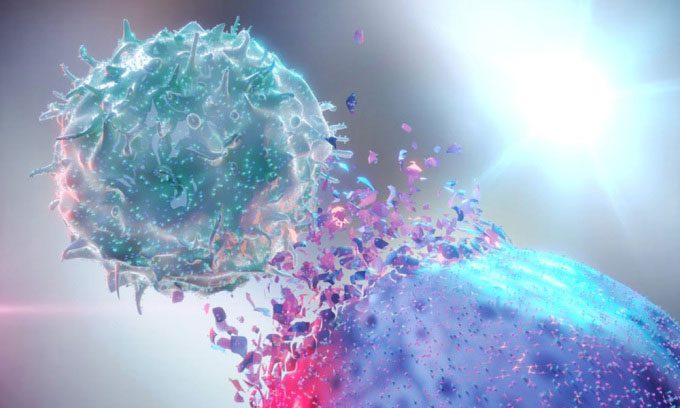Experts Discover Role of Nodules on NK Cells in the Immune System, Aiding Development of New Cancer Treatments.
A team of experts from the University of Science and Technology of China has uncovered a previously unknown mechanism by which tumors evade the body’s immune system, as reported by SCMP on April 10. This mechanism could pave the way for restoring functionality to Natural Killer (NK) cells, strengthening the body’s first line of defense against cancer and other diseases.

Chinese researchers have identified the role of nodules on Natural Killer (NK) cells. (Photo: SCMP)
NK cells in the immune system can recognize and destroy tumors and virus-infected cells at very early stages, but most tumor cells in advanced development can somehow evade detection.
“This new research provides new strategies for developing NK cell immunotherapies,” the research team stated on the website of the Chinese Academy of Sciences (CAS). The study was published in the journal Nature Immunology.
Using microscopy to capture images of the surface structure of NK cells inside and outside tumors, the team noticed significant differences. They compared NK cells from the tumors of liver cancer patients with peripheral blood NK cells and normal liver NK cells. The surface of healthy NK cell membranes is covered with nodules, while the excised tumor has very few protruding structures.
The research team also investigated whether the absence of nodules was related to the tumor’s ability to escape the immune system. They found that NK cells inside the tumor could not “communicate” with the tumor cells.
The study concluded that normal NK cells use the protrusions of their membranes to identify and capture tumor cells, while also promoting interactions between cells to create immune synapses. This interaction is essential for activating and regulating the immune response, playing a crucial role in fighting infections and cancer. However, NK cells trapped within the developing tumor have lost their protrusions and the ability to form immune synapses to destroy cancer cells.
The team also noted a significant decrease in a key component of the cell membrane, sphingomyelin (SM), in NK cells within the tumor, which appears to contribute to making their surface smoother.
According to the research, inhibitors targeting sphingomyelinase – the enzyme that breaks down SM into other compounds – could significantly increase the amount of SM in NK cell membranes, restore the nodules, and improve the ability to recognize and destroy tumors. The scientists used two inhibitors to selectively prevent the catabolism of SM in the cell membrane, resulting in a marked increase in nodule formation on the NK cell membrane within the tumor.


















































